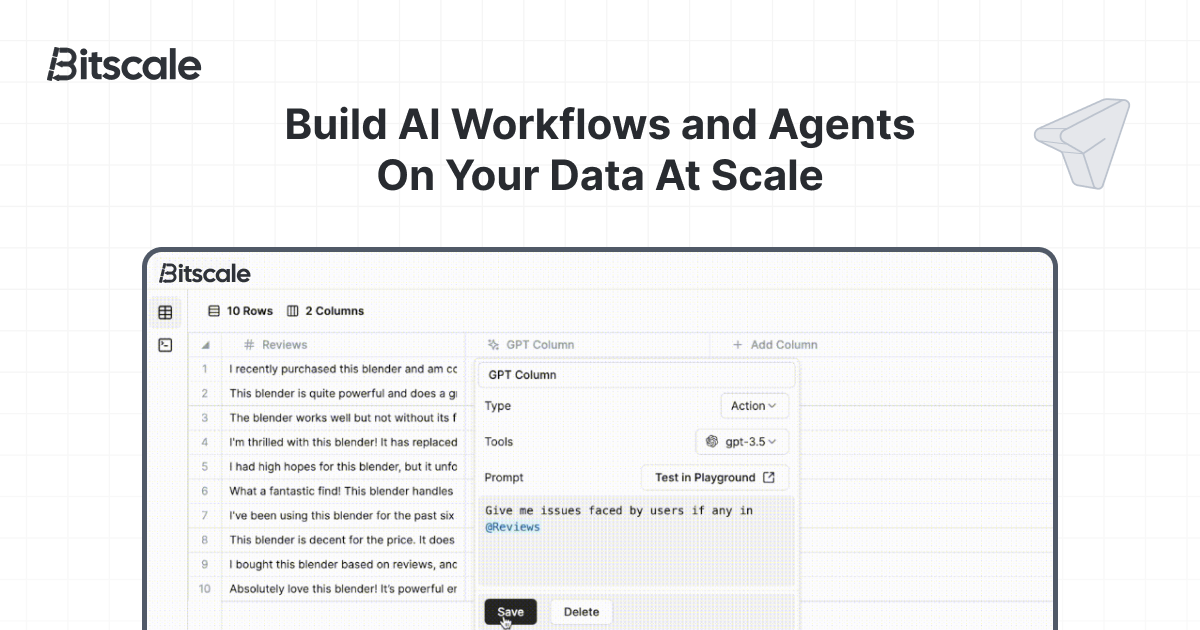How AI is Automating GTM Workflows

Unlocking speed, precision, and personalization across your revenue engine
Go-to-market (GTM) teams today are juggling increasingly complex workflows — from prospecting and enrichment to outreach and pipeline forecasting. Yet most teams still rely on a patchwork of manual steps, disconnected tools, and messy data pipelines.
AI is fundamentally changing that.
Instead of hiring more hands or buying more tools, companies are turning to AI to automate entire GTM workflows — not just isolated tasks. The result? Faster execution, higher-quality output, and a leaner revenue team.
Let’s break down how this transformation is happening.
1. Intelligent Lead Sourcing
Modern GTM starts with finding the right accounts and contacts. AI scrapes the web, parses LinkedIn profiles, and analyzes company signals to surface ideal customers at scale. For example:
- Job changes or hiring patterns to identify timing signals
- Tech stack detection to match with integrations or competitors
- Funding rounds to predict budget availability
Platforms like Bitscale offer Excel-like interfaces to combine LinkedIn scraping, funding detection, and custom filters using simple formulas — no code or clunky filters required.
2. Automated Enrichment & Validation
Once leads are identified, GTM teams need to enrich them with accurate data — emails, phone numbers, job titles, company size, and more. Traditionally, this meant stitching together tools like Clearbit, Apollo, and ZoomInfo.
AI-native tools are now dynamically selecting the right enrichment provider based on input type, data quality, and credit efficiency — without human intervention.
At Bitscale, this is handled via smart enrichment workflows that automatically choose the best source and log run histories for full transparency.
3. Hyper-Personalized Outreach with AI Copy
Outreach used to mean one-size-fits-all messaging. Now, AI can write highly personalized messages based on:
- Recent LinkedIn posts
- Job descriptions
- Company news
- Website copy
Instead of manually researching each lead, Bitscale workflows let you build AI-generated email templates that pull in dynamic fields like “@First Name” or “@Pain Point” — making personalization scalable.
4. Intent-Based Scoring & Prioritization
Not all leads are equal. AI can help score them by analyzing behavioral and firmographic signals, such as:
- Website visits and content engagement
- Product usage (for PLG)
- Social media activity
This helps sales teams focus only on high-intent accounts — increasing conversion rates and reducing wasted effort.
5. Pipeline Insights & Forecasting
Once leads enter the funnel, AI models trained on your CRM history can:
- Predict deal close probability
- Recommend next best actions
- Flag at-risk opportunities
This turns your GTM ops into a proactive, insight-driven function — rather than reactive firefighting.
6. Workflow-Level Automation
The real power comes when these components work in sequence — not isolation.
That’s where Bitscale shines. It lets teams stack actions like:
→ Find companies hiring SDRs
→ Enrich with decision-maker contact info
→ Validate email
→ Write custom email
→ Push to CRM
All as a single automated pipeline that can run for thousands of inputs in bulk — think of it as a programmable GTM engine.
Final Thoughts
AI is not replacing GTM teams — it’s supercharging them. Instead of spending hours copy-pasting between tools or running spreadsheet gymnastics, AI lets teams focus on strategy, creativity, and closing.
Tools like Bitscale are at the forefront of this shift, helping growth teams automate complex workflows with unmatched flexibility, speed, and intelligence.
Want to experience it yourself?
👉 Explore Bitscale – the most powerful GTM automation platform built for modern revenue teams.
